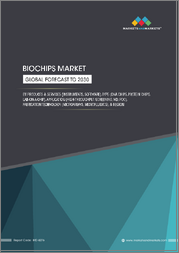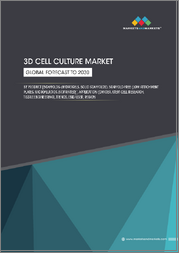
|
시장보고서
상품코드
1750711
마이크로플루이딕스 시장 규모, 점유율, 동향 분석 보고서 : 기술별, 제품별, 재료별, 용도별, 지역별, 부문별 예측(2025-2030년)Microfluidics Market Size, Share & Trends Analysis Report By Technology, By Product (Microfluidic-based Devices, Microfluidic Components), By Material (Silicon, Glass), By Application (Medical, Non-Medical), By Region, And Segment Forecasts, 2025 - 2030 |
||||||
마이크로플루이딕스 시장 성장과 동향:
Grand View Research, Inc.의 최신 보고서에 따르면, 세계 마이크로플루이딕스 시장 규모는 2030년까지 738억 5,000만 달러에 달할 것으로 예상되며, 2025년부터 2030년까지 11.99%의 CAGR을 기록할 것으로 예상됩니다. 온칩 생화학 분석을 가능하게 하는 디지털 마이크로플루이딕스 등 개선된 기술의 도입으로 마이크로플루이딕스 기반 기기에 대한 수요가 증가할 것으로 예상됩니다. 분석 및 임상 연구자들의 연구 활동 증가도 미세유체 디바이스에 대한 수요를 증가시키고 있습니다. 예를 들어, 2022년 5월 미네소타대학교 연구팀은 최소한의 부품만을 사용하여 스마트폰으로 무선으로 조작할 수 있는 혁신적인 질병 진단용 미세유체 칩을 개발했습니다.
소형 미세유체 기반 도구는 소비자들 사이에서 큰 인기를 얻고 있으며, 이는 기업의 개발 투자를 촉진하고 있습니다. 미세유체공학은 랩온칩 장치의 기본 원리이기 때문에 최소 시료량, 최소 시약 사용량, 폐기물 감소, 빠른 처리 등 다양한 이점이 있습니다. 향상된 기능의 전자동 미세유체 및 견고한 모듈성은 이 시장에서 사업을 운영하는 제조업체에게 성장 기회를 제공하고 있습니다. 이는 모듈형 칩이 여러 기기와 인터페이스할 수 있기 때문입니다. 또한, 신약 개발 분야의 기업들은 특허가 만료되는 약품의 증가로 인한 수익 감소를 상쇄하기 위해 비용과 일정을 최소화하기 위해 노력하고 있습니다.
미세유체공학의 도입은 진단 분야, 특히 POC 진단 분야에서 확대되고 있습니다. 이는 또한 POC 진단을 강화할 것으로 기대되는 미세유체 일체형 바이오센서 기술에 의해 보완되고 있습니다. 미세유체 구성요소와 POC 장치의 조합은 민감도, 안정성, 정확성, 경제성을 달성하고 최소침습적인 POC 기술을 얻는 데 주안점을 두고 있습니다. 미세유체 POC 기술은 개인화, 질병의 조기 발견, 쉬운 모니터링을 보장하여 환자 치료를 강화할 것으로 예상됩니다.
또한, COVID-19는 미세유체공학의 사용을 더욱 확대했습니다. POC(Point-of-Care) 검사는 소형 장비를 사용하고, 프로세스를 제어하고, 검사 주기를 제한합니다. 이를 통해 단일 또는 여러 연구 실험실 서비스가 생물학적 샘플을 평가하고 유해한 질병을 동시에 진단 할 수 있습니다. 일반적으로 바이러스 전염병의 단계적 평가와 신속한 검출은 전염병 상황을 극복하고 신속하게 진단하는 데 필수적입니다. 따라서 미세 유체 장치를 현장 검사와 결합하여 검출 효율을 향상시킬 수 있습니다. 동시에 미세유체 칩을 이용한 현장 검사는 사용자의 편의성을 높이고, 민감도와 정확도를 향상시키며, 검출 시간을 단축할 수 있습니다.
2021년 6월, 다나허는 캐나다에 본사를 둔 솔루션 제공업체인 Precision Nanosystems(PNI)를 인수하여 생명과학 사업부문을 강화한다고 발표했습니다. PNI는 미세유체 기반 플랫폼을 통한 LNP 전달 및 나노입자 제조를 포함한 독자적인 유전자 툴킷 플랫폼을 제공하여 생명과학 제품 포트폴리오를 더욱 보완할 수 있게 되었다고 발표하였습니다.
한편, 높은 운영 비용은 마이크로플루이딕스 시장의 성장을 어느 정도 방해하고 있습니다. 미세유체 칩의 제조에는 최종 밀폐 구조를 형성하기 위해 기계 부품의 접착이 필요한 개방형 채널 구조와 같은 문제가 있습니다. 개방형 채널은 유리 또는 실리콘을 에칭하여 형성됩니다. 이 단계는 시간이 오래 걸리고 비용이 많이 들며 공격적인 화학제품을 사용해야 합니다. 또한, 대부분의 미세유체 프로토타이핑 방법은 배치 공정에 적합하지 않고 복잡하고 비용이 많이 듭니다.
마이크로플루이딕스 시장 보고서 하이라이트
- 용도별로는 의료 분야가 2024년 가장 큰 수익 점유율을 차지했습니다. 미세유체공학은 생물학적 분석, 화학 합성, 정보 기술에서 중요한 기술입니다.
- 재료별로는 폴리디메틸실록산(PDMS) 부문이 2024년 36.60%의 가장 높은 매출 점유율을 차지했으며, PDMS는 이 재료가 제공하는 몇 가지 장점으로 인해 미세유체공학에 널리 사용되는 폴리머입니다.
- 기술별로는 랩온어칩 분야가 2024년 37.49%의 가장 높은 시장 점유율을 차지했으며, 랩온어칩 연구는 최근 세포생물학에서 가능성을 보여주고 있습니다.
- 북미 마이크로플루이딕스 시장은 2024년 42.3%의 매출 점유율로 세계 시장을 지배했습니다. 이러한 우위는 주로 정부 기관과 민간 기업 모두로부터의 강력한 연구 자금에 기인합니다.
목차
제1장 조사 방법과 범위
제2장 주요 요약
제3장 시장 변수, 동향, 범위
- 시장 계통 전망
- 상부 시장 전망
- 관련/부수 시장 전망
- 시장 역학
- 시장 성장 촉진요인 분석
- 시장 성장 억제요인 분석
- 마이크로플루이딕스 시장 분석 툴
- 업계 분석 - Porter's Five Forces 분석
- PESTEL 분석
- COVID-19의 영향 분석
제4장 마이크로플루이딕스 시장 : 제품별 비즈니스 분석
- 제품별 부문 대시보드
- 세계의 마이크로플루이딕스 시장 제품별 변동 분석
- 세계의 마이크로플루이딕스 시장 규모와 동향 분석(제품별, 2018-2030년)
- 미세유체 기반 디바이스
- 미세유체 컴포넌트
제5장 마이크로플루이딕스 시장 : 용도별 비즈니스 분석
- 용도별 부문 대시보드
- 세계의 마이크로플루이딕스 시장 용도별 변동 분석
- 세계의 마이크로플루이딕스 시장 규모와 동향 분석(용도별, 2018-2030년)
- 의료
- 비의료
제6장 마이크로플루이딕스 시장 : 재료별 비즈니스 분석
- 재료별 부문 대시보드
- 세계의 마이크로플루이딕스 시장 : 재료별 변동 분석
- 세계의 마이크로플루이딕스 시장 규모와 동향 분석(재료별, 2018-2030년)
- 실리콘
- 유리
- 폴리머
- 폴리디메틸실록산(PDMS)
- 기타
제7장 마이크로플루이딕스 시장 : 기술별 비즈니스 분석
- 기술별 부문 대시보드
- 세계의 마이크로플루이딕스 시장 기술별 변동 분석
- 세계의 마이크로플루이딕스 시장 규모와 동향 분석(기술별, 2018-2030년)
- 랩온어칩
- 장기칩
- 연속 흐름 마이크로플루이딕스
- 광유체학과 마이크로플루이딕스
- 음향유체학과 마이크로플루이딕스
- 전기영동과 마이크로플루이딕스
제8장 마이크로플루이딕스 시장 : 지역별 추정·동향 분석
- 북미
- 미국
- 캐나다
- 멕시코
- 유럽
- 영국
- 독일
- 프랑스
- 이탈리아
- 스페인
- 노르웨이
- 스웨덴
- 덴마크
- 아시아태평양
- 일본
- 중국
- 인도
- 태국
- 한국
- 호주
- 라틴아메리카
- 브라질
- 아르헨티나
- 중동 및 아프리카
- 남아프리카공화국
- 사우디아라비아
- 아랍에미리트
- 쿠웨이트
제9장 경쟁 구도
- 기업 분류
- 전략 매핑
- 기업 시장 상황 분석, 2024년
- 기업 개요/상장 기업
- Illumina, Inc.
- F. Hoffmann-La Roche Ltd.
- Revitty
- Agilent Technologies, Inc.
- Danaher
- Bio-Rad Laboratories, Inc.
- thinXXS Microtechnology GmbH
- Abbott
- Thermo Fisher Scientific, Inc.
- Standard BioTools
Microfluidics Market Growth & Trends:
The global microfluidics market size is expected to reach USD 73.85 billion by 2030, registering CAGR of 11.99% from 2025 to 2030, according to a new report by Grand View Research, Inc. The demand for microfluidics-based devices is expected to increase due to the introduction of improved technology such as digital microfluidics, which enables on-chip biochemical analysis. An increase in research activities undertaken by analytical and clinical researchers have also driven the demand for microfluidics device. For instance, in May 2022, a research team from the University of Minnesota developed an innovative microfluidic chip for disease diagnosing that uses a minimum number of components and can be operated wirelessly by a smartphone.
Miniature microfluidic-based tools are gaining significant popularity among consumers, which has encouraged companies to invest in their development. Since microfluidics is the underlying principle of lab-on-a-chip devices, it offers various benefits such as minimal sample volume, minimal reagent usage, reduced waste, and rapid processing. Fully automated microfluidics with enhanced functional capabilities, and robust modularity are creating growth opportunities for manufacturers operating in the market. This can be attributed to the fact that modular chips can interface with several instruments. In addition, companies operating in the field of drug discovery are striving to minimize overhead costs and timelines to offset the estimated decline in revenue owing to a significant number of drugs going off-patent.
The implementation of microfluidics is expanding in the field of diagnostics, especially in POC diagnostics. This is also supplemented by microfluidics-integrated biosensor technologies that are expected to enhance POC diagnostics. The combination of microfluidic components with POC devices is largely focused on achieving sensitivity, stability, accuracy, affordability, and obtaining minimally invasive POC technology. Microfluidic POC technologies are expected to enhance patient care by ensuring personalization, early disease detection, and easy monitoring.
In addition, COVID-19 has further upscaled the use of microfluidics. Point-of-care testing involves small equipment, regulates the process, and has limited testing cycles. This allows single or multiple research laboratory services to evaluate biological samples and diagnose harmful diseases simultaneously. In general, stage assessment and rapid detection of viral epidemics are vital to overcoming pandemic situations and diagnosing rapidly. Therefore, combining microfluidic devices with point-of-care testing enhances detection efficiency. At the same time, point-of-care testing of microfluidic chips enhances user accessibility, improves sensitivity and accuracy, and reduces the detection time, all of which are advantageous in detecting SARS-CoV-2.
Further, several acquisitions in the microfluidics industry are aimed at enhancing technologies for expanding the scope of microfluidics-related applications. In June 2021, Danaher Corporation announced that Precision NanoSystems (PNI), a Canada-based solution provider, was acquired by its life science business. PNI offered proprietary genetic toolkit platforms, including LNP delivery and nanoparticle manufacturing via the microfluidic-based platform, which further complemented the company's portfolio of life science products.
On the other hand, high operational costs hinder the microfluidics market growth to a certain extent. The fabrication of microfluidics chips has certain issues such as open channel construction that require bonding of machine parts to form a final enclosed structure. The open channel is formed by the etching of glass or silicon. This step is slow, costly, and requires the use of aggressive chemicals. In addition, most of the microfluidic prototyping methods are not compatible with the batch process, and are also complicated and costly.
Microfluidics Market Report Highlights:
- Based on application, the medical segment held the largest revenue share in 2024. Microfluidics is a significant technology in biological analysis, chemical synthesis, and information technology.
- Based on material, the polydimethylsiloxane (PDMS) segment held the highest revenue share of 36.60% in 2024. PDMS is a widely used polymer in microfluidics owing to the several advantages offered by the material.
- Based on technology, Lab-on-a-chip segment held the highest market share of 37.49% in 2024. Lab-on-a-chip research has recently shown potential in cell biology.
- North America microfluidics market dominated the global market with a revenue share of 42.3% in 2024. This dominance is primarily driven by strong research funding from both government bodies and private industries
Table of Contents
Chapter 1. Methodology and Scope
- 1.1. Market Segmentation and Scope
- 1.2. Market Definitions
- 1.2.1. Product Segment
- 1.2.2. Application Segment
- 1.2.3. Material Segment
- 1.2.4. Technology Segment
- 1.3. Information analysis
- 1.4. Market formulation & data visualization
- 1.5. Data validation & publishing
- 1.6. Information Procurement
- 1.6.1. Primary Research
- 1.7. Information or Data Analysis
- 1.8. Market Formulation & Validation
- 1.9. Market Model
- 1.10. Objectives
Chapter 2. Executive Summary
- 2.1. Market Outlook
- 2.2. Segment Snapshot
- 2.3. Competitive Landscape Snapshot
Chapter 3. Market Variables, Trends, & Scope
- 3.1. Market Lineage Outlook
- 3.1.1. Parent market outlook
- 3.1.2. Related/ancillary market outlook
- 3.2. Market Dynamics
- 3.2.1. Market driver analysis
- 3.2.1.1. Advancements in 3D Printing & Digital Manufacturing
- 3.2.1.2. Rising Research & Development Investments
- 3.2.2. Market restraint analysis
- 3.2.2.1. High initial costs
- 3.2.1. Market driver analysis
- 3.3. Microfluidics Market Analysis Tools
- 3.3.1. Industry Analysis - Porter's
- 3.3.2. PESTEL Analysis
- 3.3.3. COVID-19 Impact Analysis
Chapter 4. Microfluidics Market: Product Business Analysis
- 4.1. Product Segment Dashboard
- 4.2. Global Microfluidics Market Product Movement Analysis
- 4.3. Global Microfluidics Market Size & Trend Analysis, by Product, 2018 to 2030 (USD Million)
- 4.4. Microfluidic-based Devices
- 4.4.1. Global Microfluidic based Devices Market, 2018 - 2030 (USD Million)
- 4.4.2. Chips
- 4.4.2.1. Global Chips Market, 2018 - 2030 (USD Million)
- 4.4.3. Micro-pumps
- 4.4.3.1. Global Micro-pumps Market, 2018 - 2030 (USD Million)
- 4.4.4. Sensors
- 4.4.4.1. Global Sensors Market, 2018 - 2030 (USD Million)
- 4.4.5. Others
- 4.4.5.1. Global Others Market, 2018 - 2030 (USD Million)
- 4.5. Microfluidic Components
- 4.5.1. Global Microfluidic Components Market, 2018 - 2030 (USD Million)
Chapter 5. Microfluidics Market: Application Business Analysis
- 5.1. Application Segment Dashboard
- 5.2. Global Microfluidics Market Application Movement Analysis
- 5.3. Global Microfluidics Market Size & Trend Analysis, by Application, 2018 to 2030 (USD Million)
- 5.4. Medical
- 5.4.1. Pharmaceuticals
- 5.4.1.1. Global Pharmaceuticals Market, 2018 - 2030 (USD Million)
- 5.4.2. Medical Devices
- 5.4.2.1. Global Medical Devices Market, 2018 - 2030 (USD Million)
- 5.4.3. In-vitro Diagnostics
- 5.4.3.1. Global In-vitro Diagnostics Market, 2018 - 2030 (USD Million)
- 5.4.4. Others
- 5.4.4.1. Global Others Market, 2018 - 2030 (USD Million)
- 5.4.1. Pharmaceuticals
- 5.5. Non-Medical
- 5.5.1. Global Non-Medical Market, 2018 - 2030 (USD Million)
Chapter 6. Microfluidics Market: Material Business Analysis
- 6.1. Material Segment Dashboard
- 6.2. Global Microfluidics Market Material Movement Analysis
- 6.3. Global Microfluidics Market Size & Trend Analysis, by Material, 2018 to 2030 (USD Million)
- 6.4. Silicon
- 6.4.1. Global Silicon Market, 2018 - 2030 (USD Million)
- 6.5. Glass
- 6.5.1. Global Glass Market, 2018 - 2030 (USD Million)
- 6.6. Polymer
- 6.6.1. Global Polymer Market, 2018 - 2030 (USD Million)
- 6.7. Polydimethylsiloxane (PDMS)
- 6.7.1. Global Polydimethylsiloxane (PDMS) Market, 2018 - 2030 (USD Million)
- 6.8. Others
- 6.8.1. Global Others Market, 2018 - 2030 (USD Million)
Chapter 7. Microfluidics Market: Technology Business Analysis
- 7.1. Technology Segment Dashboard
- 7.2. Global Microfluidics Market Technology Movement Analysis
- 7.3. Global Microfluidics Market Size & Trend Analysis, by Technology, 2018 to 2030 (USD Million)
- 7.4. Lab-on-a-chip
- 7.4.1. Global Lab-on-a-chip Market, 2018 - 2030 (USD Million)
- 7.5. Organs-on-chips
- 7.5.1. Global Organs-on-chips Market, 2018 - 2030 (USD Million)
- 7.6. Continuous flow microfluidics
- 7.6.1. Global Continuous Flow Microfluidics Market, 2018 - 2030 (USD Million)
- 7.7. Optofluidics and microfluidics
- 7.7.1. Global Optofluidics and microfluidics Market, 2018 - 2030 (USD Million)
- 7.8. Acoustofluidics and microfluidics
- 7.8.1. Global Acoustofluidics and microfluidics Market, 2018 - 2030 (USD Million)
- 7.9. Electrophoresis and microfluidics
- 7.9.1. Global Electrophoresis and microfluidics Market, 2018 - 2030 (USD Million)
Chapter 8. Regional Microfluidics Market: Region Estimates & Trend Analysis
- 8.1. North America
- 8.1.1. North America market estimates and forecasts 2018 - 2030 (USD Million)
- 8.1.2. U.S.
- 8.1.2.1. Key country dynamics
- 8.1.2.2. Competitive scenario
- 8.1.2.3. Regulatory Framework
- 8.1.2.4. Target Disease Prevalence
- 8.1.2.5. U.S. market estimates and forecasts 2018 - 2030 (USD Million)
- 8.1.3. Canada
- 8.1.3.1. Key country dynamics
- 8.1.3.2. Competitive scenario
- 8.1.3.3. Regulatory Framework
- 8.1.3.4. Target Disease Prevalence
- 8.1.3.5. Canada market estimates and forecasts 2018 - 2030 (USD Million)
- 8.1.4. Mexico
- 8.1.4.1. Key country dynamics
- 8.1.4.2. Competitive scenario
- 8.1.4.3. Regulatory Framework
- 8.1.4.4. Target Disease Prevalence
- 8.1.4.5. Mexico market estimates and forecasts 2018 - 2030 (USD Million)
- 8.2. Europe
- 8.2.1. Europe market estimates and forecasts 2018 - 2030 (USD Million)
- 8.2.2. UK
- 8.2.2.1. Key country dynamics
- 8.2.2.2. Competitive scenario
- 8.2.2.3. Regulatory Framework
- 8.2.2.4. Target Disease Prevalence
- 8.2.2.5. UK market estimates and forecasts 2018 - 2030 (USD Million)
- 8.2.3. Germany
- 8.2.3.1. Key country dynamics
- 8.2.3.2. Competitive scenario
- 8.2.3.3. Regulatory Framework
- 8.2.3.4. Target Disease Prevalence
- 8.2.3.5. Germany market estimates and forecasts 2018 - 2030 (USD Million)
- 8.2.4. France
- 8.2.4.1. Key country dynamics
- 8.2.4.2. Competitive scenario
- 8.2.4.3. Regulatory Framework
- 8.2.4.4. Target Disease Prevalence
- 8.2.4.5. France market estimates and forecasts 2018 - 2030 (USD Million)
- 8.2.5. Italy
- 8.2.5.1. Key country dynamics
- 8.2.5.2. Competitive scenario
- 8.2.5.3. Regulatory Framework
- 8.2.5.4. Target Disease Prevalence
- 8.2.5.5. Italy market estimates and forecasts 2018 - 2030 (USD Million)
- 8.2.6. Spain
- 8.2.6.1. Key country dynamics
- 8.2.6.2. Competitive scenario
- 8.2.6.3. Regulatory Framework
- 8.2.6.4. Target Disease Prevalence
- 8.2.6.5. Spain market estimates and forecasts 2018 - 2030 (USD Million)
- 8.2.7. Norway
- 8.2.7.1. Key country dynamics
- 8.2.7.2. Competitive scenario
- 8.2.7.3. Regulatory Framework
- 8.2.7.4. Target Disease Prevalence
- 8.2.7.5. Norway market estimates and forecasts 2018 - 2030 (USD Million)
- 8.2.8. Sweden
- 8.2.8.1. Key country dynamics
- 8.2.8.2. Competitive scenario
- 8.2.8.3. Regulatory Framework
- 8.2.8.4. Target Disease Prevalence
- 8.2.8.5. Sweden market estimates and forecasts 2018 - 2030 (USD Million)
- 8.2.9. Denmark
- 8.2.9.1. Key country dynamics
- 8.2.9.2. Competitive scenario
- 8.2.9.3. Regulatory Framework
- 8.2.9.4. Target Disease Prevalence
- 8.2.9.5. Denmark market estimates and forecasts 2018 - 2030 (USD Million)
- 8.3. Asia Pacific
- 8.3.1. Asia Pacific market estimates and forecasts 2018 - 2030 (USD Million)
- 8.3.2. Japan
- 8.3.2.1. Key country dynamics
- 8.3.2.2. Competitive scenario
- 8.3.2.3. Regulatory Framework
- 8.3.2.4. Target Disease Prevalence
- 8.3.2.5. Japan market estimates and forecasts 2018 - 2030 (USD Million)
- 8.3.3. China
- 8.3.3.1. Key country dynamics
- 8.3.3.2. Competitive scenario
- 8.3.3.3. Regulatory Framework
- 8.3.3.4. Target Disease Prevalence
- 8.3.3.5. China market estimates and forecasts 2018 - 2030 (USD Million)
- 8.3.4. India
- 8.3.4.1. Key country dynamics
- 8.3.4.2. Competitive scenario
- 8.3.4.3. Regulatory Framework
- 8.3.4.4. Target Disease Prevalence
- 8.3.4.5. India market estimates and forecasts 2018 - 2030 (USD Million)
- 8.3.5. Thailand
- 8.3.5.1. Key country dynamics
- 8.3.5.2. Competitive scenario
- 8.3.5.3. Regulatory Framework
- 8.3.5.4. Target Disease Prevalence
- 8.3.5.5. Thailand market estimates and forecasts 2018 - 2030 (USD Million)
- 8.3.6. South Korea
- 8.3.6.1. Key country dynamics
- 8.3.6.2. Competitive scenario
- 8.3.6.3. Regulatory Framework
- 8.3.6.4. Target Disease Prevalence
- 8.3.6.5. South Korea market estimates and forecasts 2018 - 2030 (USD Million)
- 8.3.7. Australia
- 8.3.7.1. Key country dynamics
- 8.3.7.2. Competitive scenario
- 8.3.7.3. Regulatory Framework
- 8.3.7.4. Target Disease Prevalence
- 8.3.7.5. Australia market estimates and forecasts 2018 - 2030 (USD Million)
- 8.4. Latin America
- 8.4.1. Latin America market estimates and forecasts 2018 - 2030 (USD Million)
- 8.4.2. Brazil
- 8.4.2.1. Key country dynamics
- 8.4.2.2. Competitive scenario
- 8.4.2.3. Regulatory Framework
- 8.4.2.4. Target Disease Prevalence
- 8.4.2.5. Brazil market estimates and forecasts 2018 - 2030 (USD Million)
- 8.4.3. Argentina
- 8.4.3.1. Key country dynamics
- 8.4.3.2. Competitive scenario
- 8.4.3.3. Regulatory Framework
- 8.4.3.4. Target Disease Prevalence
- 8.4.3.5. Argentina market estimates and forecasts 2018 - 2030 (USD Million)
- 8.5. Middle East & Africa
- 8.5.1. Middle East & Africa market estimates and forecasts 2018 - 2030 (USD Million)
- 8.5.2. South Africa
- 8.5.2.1. Key country dynamics
- 8.5.2.2. Competitive scenario
- 8.5.2.3. Regulatory Framework
- 8.5.2.4. Target Disease Prevalence
- 8.5.2.5. South Africa market estimates and forecasts 2018 - 2030 (USD Million)
- 8.5.3. Saudi Arabia
- 8.5.3.1. Key country dynamics
- 8.5.3.2. Competitive scenario
- 8.5.3.3. Regulatory Framework
- 8.5.3.4. Target Disease Prevalence
- 8.5.3.5. Saudi Arabia market estimates and forecasts 2018 - 2030 (USD Million)
- 8.5.4. UAE
- 8.5.4.1. Key country dynamics
- 8.5.4.2. Competitive scenario
- 8.5.4.3. Regulatory Framework
- 8.5.4.4. Target Disease Prevalence
- 8.5.4.5. UAE market estimates and forecasts 2018 - 2030 (USD Million)
- 8.5.5. Kuwait
- 8.5.5.1. Key country dynamics
- 8.5.5.2. Competitive scenario
- 8.5.5.3. Regulatory Framework
- 8.5.5.4. Target Disease Prevalence
- 8.5.5.5. Kuwait market estimates and forecasts 2018 - 2030 (USD Million)
Chapter 9. Competitive Landscape
- 9.1. Company Categorization
- 9.2. Strategy Mapping
- 9.3. Company Market Position Analysis, 2024
- 9.4. Company Profiles/Listing
- 9.4.1. Illumina, Inc.
- 9.4.1.1. Overview
- 9.4.1.2. Financial Performance
- 9.4.1.3. Product Benchmarking
- 9.4.1.4. Strategic Initiatives
- 9.4.2. F. Hoffmann-La Roche Ltd.
- 9.4.2.1. Overview
- 9.4.2.2. Financial Performance
- 9.4.2.3. Product Benchmarking
- 9.4.2.4. Strategic Initiatives
- 9.4.3. Revitty
- 9.4.3.1. Overview
- 9.4.3.2. Financial Performance
- 9.4.3.3. Product Benchmarking
- 9.4.3.4. Strategic Initiatives
- 9.4.4. Agilent Technologies, Inc.
- 9.4.4.1. Overview
- 9.4.4.2. Financial Performance
- 9.4.4.3. Product Benchmarking
- 9.4.4.4. Strategic Initiatives
- 9.4.5. Danaher
- 9.4.5.1. Overview
- 9.4.5.2. Financial Performance
- 9.4.5.3. Product Benchmarking
- 9.4.5.4. Strategic Initiatives
- 9.4.6. Bio-Rad Laboratories, Inc.
- 9.4.6.1. Overview
- 9.4.6.2. Financial Performance
- 9.4.6.3. Product Benchmarking
- 9.4.6.4. Strategic Initiatives
- 9.4.7. thinXXS Microtechnology GmbH
- 9.4.7.1. Overview
- 9.4.7.2. Financial Performance
- 9.4.7.3. Product Benchmarking
- 9.4.7.4. Strategic Initiatives
- 9.4.8. Abbott
- 9.4.8.1. Overview
- 9.4.8.2. Financial Performance
- 9.4.8.3. Product Benchmarking
- 9.4.8.4. Strategic Initiatives
- 9.4.9. Thermo Fisher Scientific, Inc.
- 9.4.9.1. Overview
- 9.4.9.2. Financial Performance
- 9.4.9.3. Product Benchmarking
- 9.4.9.4. Strategic Initiatives
- 9.4.10. Standard BioTools
- 9.4.10.1. Overview
- 9.4.10.2. Financial Performance
- 9.4.10.3. Product Benchmarking
- 9.4.10.4. Strategic Initiatives
- 9.4.1. Illumina, Inc.
(주말 및 공휴일 제외)


















